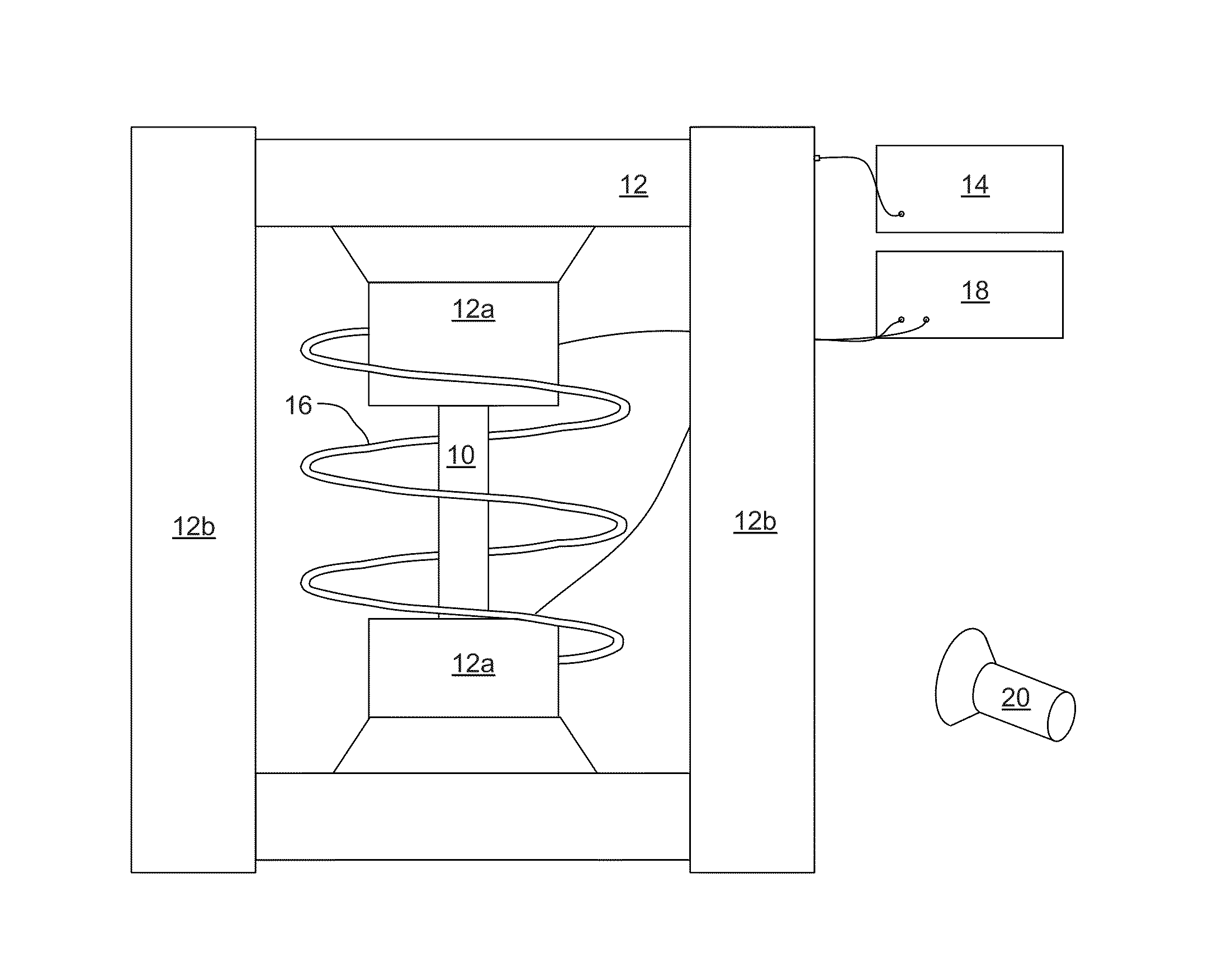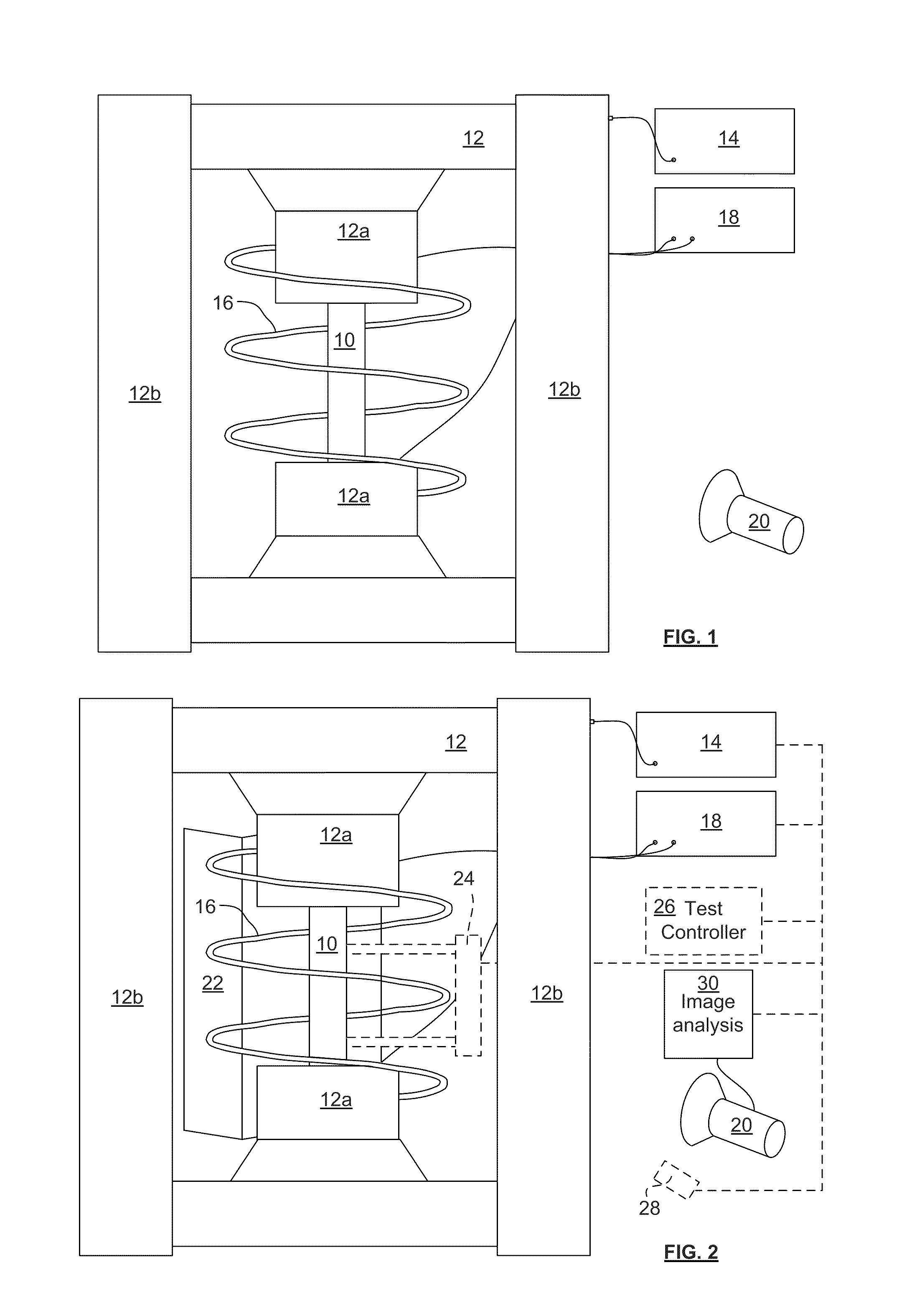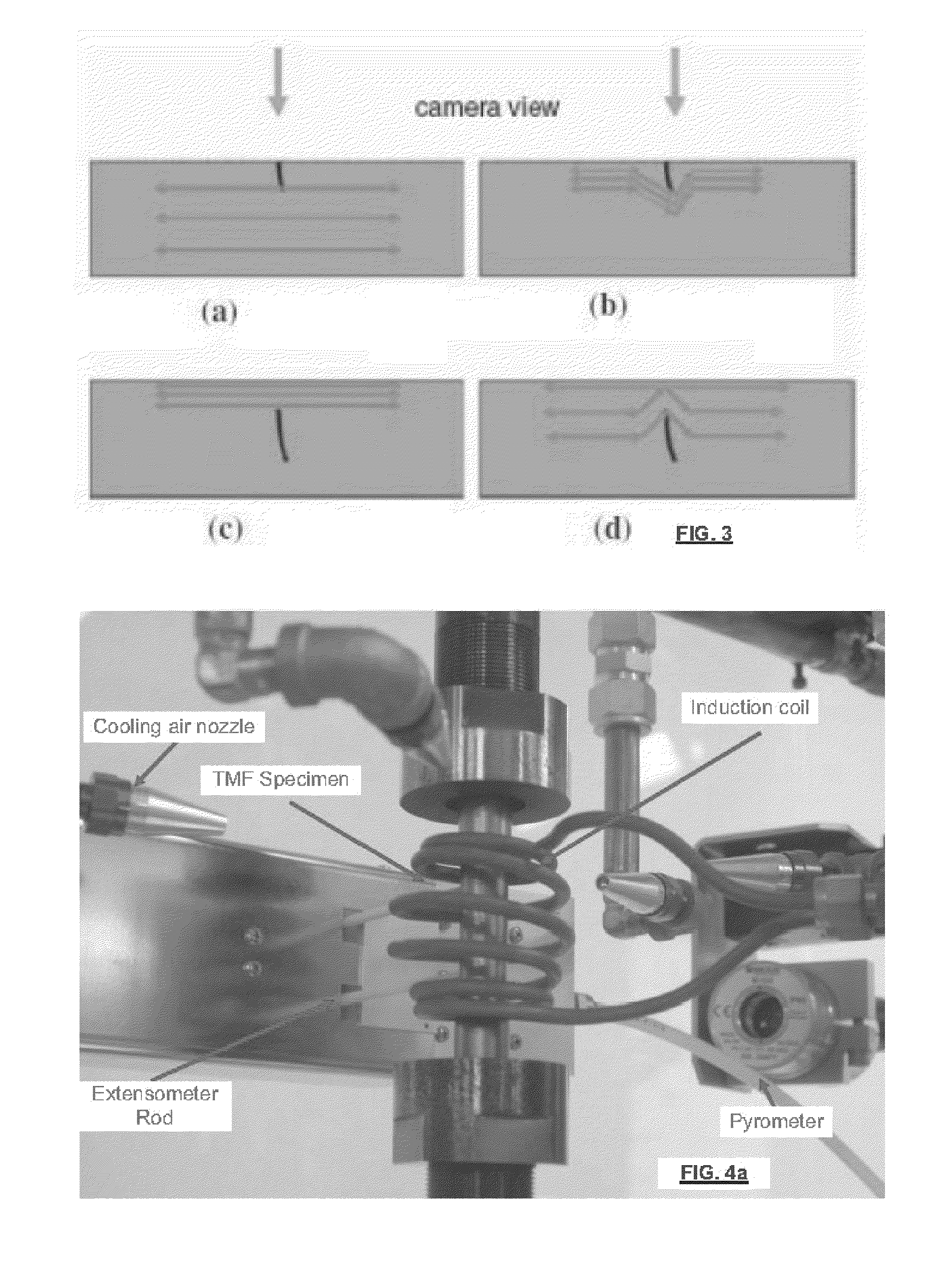Apparatus for crack detection during heat and load testing
a technology for crack detection and apparatus, applied in the field of apparatus for crack detection during heat and load testing, can solve the problems of inability to automate the procedure, high temperature and mechanical load on the and many engineering materials such as components of gas turbine engines
- Summary
- Abstract
- Description
- Claims
- Application Information
AI Technical Summary
Benefits of technology
Problems solved by technology
Method used
Image
Examples
examples
[0046]FIGS. 4a,b are two images showing an experimental heat and load test apparatus used for demonstrating the utility of the present invention. A MTS model 810 uniaxial servo-hydraulic test machine with a 100 kN load capacity was used as the load frame and actuator, to apply mechanical loading during the TMF test. The thermal loading was induced with an inductive helical coil powered by an Ameritherm Novastar 5 kW frequency generator. The strain was measured using a MTS model 654.54.11F high-temperature axial extensometer, while the temperature was measured using a Mikron MiGA5 infrared pyrometer. The control system consisted of a MTS model 493.01 digital controller running MTS 793 system software which was used for closed-loop control of both strain and temperature, and open-loop control of cooling air supplied to the sample.
[0047]The TMF test sample was machined from an inconel alloy. The sample had a length of ˜4″, a ˜½″ diameter. Prior to starting the TMF test, two black-body ...
PUM
 Login to View More
Login to View More Abstract
Description
Claims
Application Information
 Login to View More
Login to View More - R&D
- Intellectual Property
- Life Sciences
- Materials
- Tech Scout
- Unparalleled Data Quality
- Higher Quality Content
- 60% Fewer Hallucinations
Browse by: Latest US Patents, China's latest patents, Technical Efficacy Thesaurus, Application Domain, Technology Topic, Popular Technical Reports.
© 2025 PatSnap. All rights reserved.Legal|Privacy policy|Modern Slavery Act Transparency Statement|Sitemap|About US| Contact US: help@patsnap.com



